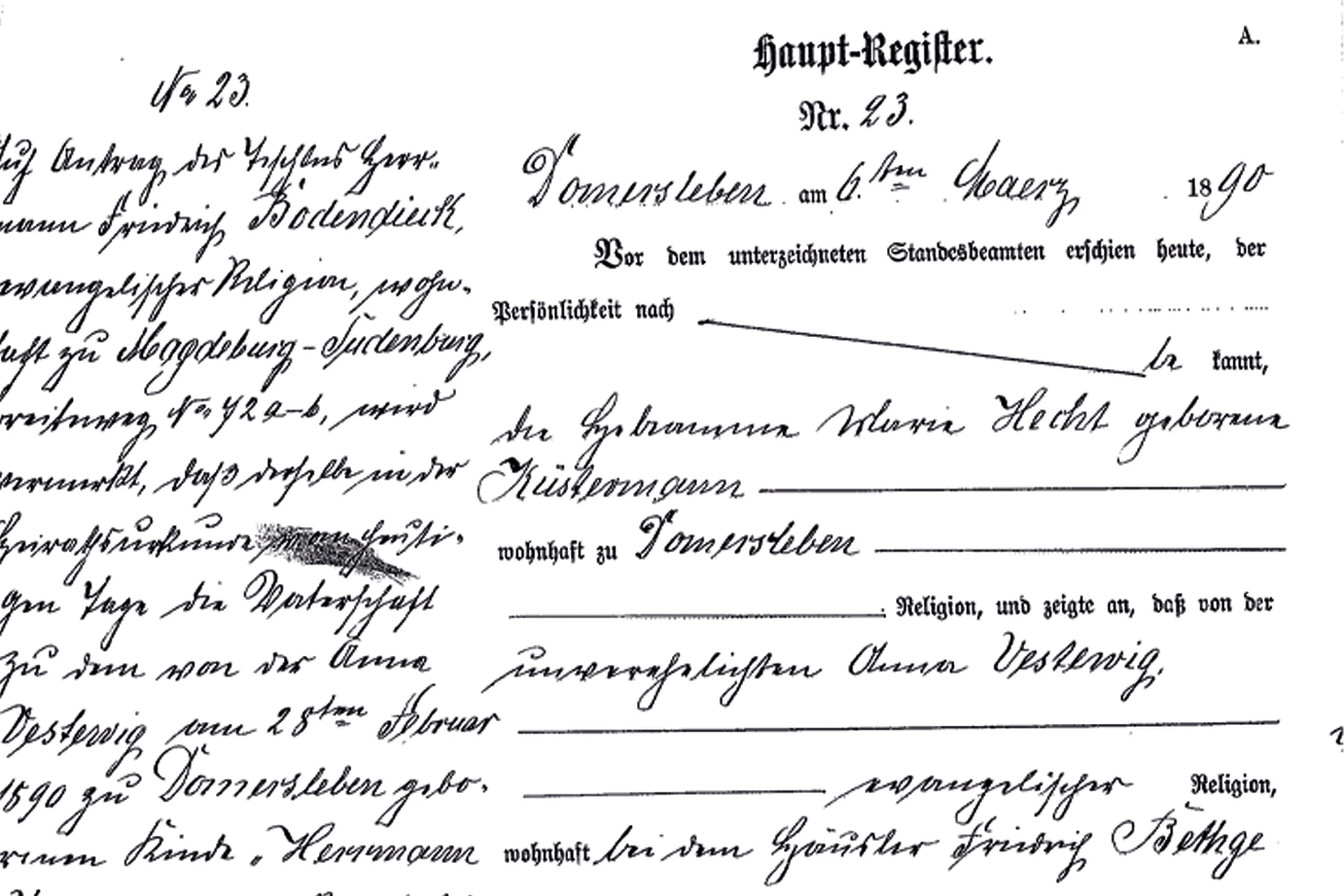Understanding German Civil Records (Standesamt): What They Reveal About Your Family
Published by Gunar Bodendiek. Last updated on October 14, 2025.

If your German ancestors lived after 1876, there’s a good chance their vital events—births, marriages, and deaths—were recorded by the Standesamt (civil registry office). These documents are among the most accurate and detailed sources for genealogical research in Germany. In this guide, you’ll learn what civil records are, what information they contain, and how to access them online or through archives.
1. The Beginning of Civil Registration in Germany
Before 1876, church registers were the main source of vital records in most German territories. That changed with the Reich Civil Registration Law (Personenstandsgesetz), which took effect on January 1, 1876. From that point on, every birth, marriage, and death had to be registered by a government office rather than the church.
The new system standardized record keeping across the newly unified German Empire. Each community—no matter how small—was assigned to a local civil registry office (Standesamt), which kept official books separate from church records. These registers remain the foundation of modern German vital documentation to this day.
2. Types of Civil Records
The Standesamt kept three main types of records (Urkunden):
- Geburtsurkunde (Birth Record): Lists the child’s name, date and place of birth, names of parents (including maiden name of the mother), their occupations, residence, and often the informant’s signature.
- Heiratsurkunde (Marriage Record): Includes the names, occupations, and birthplaces of bride and groom, their ages, marital status, religion, parents’ names, and witnesses. Later entries may include divorce annotations.
- Sterbeurkunde (Death Record): Gives the name of the deceased, occupation, marital status, date and place of death, age, birthplace, and names of spouse or parents if known. The informant (usually a relative or hospital official) is also listed.
Some Standesämter also recorded supplemental information such as name changes, acknowledgments of paternity, or corrections to earlier records.
3. What Makes Civil Records So Valuable
Compared to church records, civil registers are generally more detailed, standardized, and easier to read. Handwriting is often clearer, and the forms follow printed templates. Each record typically contains:
- Exact dates and places of events
- Full names (including maiden names)
- Occupations and addresses
- Information about witnesses and informants
- Official seals and registrar signatures
Because both church and civil authorities continued recording in parallel for some years, comparing the two can help verify accuracy or reveal denominational differences.
4. Access Restrictions and Privacy Rules
German privacy laws protect more recent records. As of today, civil records become publicly accessible after:
- 110 years for births
- 80 years for marriages
- 30 years for deaths
Older records are typically transferred from the Standesamt to the local or state archive (Stadtarchiv or Landesarchiv) and can be viewed by researchers. More recent records can be requested directly from the Standesamt if you are a descendant or can demonstrate legitimate interest (berechtigtes Interesse).
5. Where to Find Digitized Civil Records
Many archives and genealogy platforms have digitized Standesamt books. Here are the best starting points:
- FamilySearch.org – Extensive microfilm and digital images from regional archives.
- Ancestry.de – Large collections from Prussia, Bavaria, Baden, and Württemberg.
- Archion.de – Protestant church records (for earlier comparison).
- Matricula-online.eu – Catholic parish registers (for earlier comparison).
- Regional archive portals like Landesarchiv Baden-Württemberg and Archivportal-D.
Some city archives, such as those in Berlin, Hamburg, and Cologne, have searchable online databases (Online-Findbücher) where you can identify available books before submitting a request.
6. How to Request Copies
If the records you need aren’t yet online, you can write directly to the responsible Standesamt or archive. Include as much detail as possible:
- Full name of the person
- Date and place of event (even approximate)
- Type of record (birth, marriage, death)
- Your relationship to the person
- Reason for your request (genealogical research)
Most offices will provide a certified copy (beglaubigte Abschrift) for a small fee, or a simple transcript (Auszug) if preferred. Correspondence can be in English, though German increases success rates.
7. Using Civil Records to Build a Family Story
Civil records do more than confirm dates—they connect families. Comparing a marriage record to a later death entry, for example, can show how long a couple lived, where they moved, and whether their social status changed. Occupations and addresses also help map a family’s movement between towns or regions over generations.
Need Help Finding or Translating Civil Records?
Deciphering German legal and bureaucratic handwriting—or navigating regional archives—can be challenging, even for experienced researchers. At My German Origin, I specialize in locating, interpreting, and translating civil and church records across all German-speaking regions.
Request a free feasibility check to find out what civil records are available for your family.



